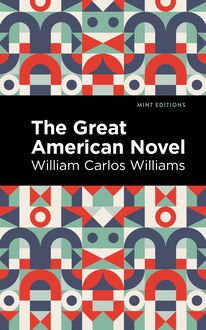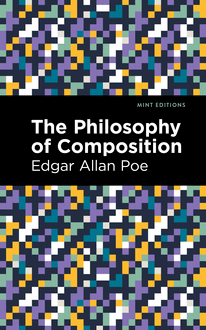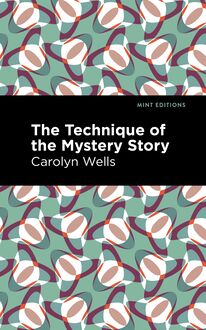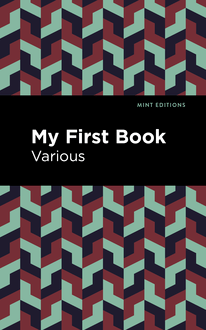-
 Univers
Univers
-
 Ebooks
Ebooks
-
 Livres audio
Livres audio
-
 Presse
Presse
-
 Podcasts
Podcasts
-
 BD
BD
-
 Documents
Documents
-
- Cours
- Révisions
- Ressources pédagogiques
- Sciences de l’éducation
- Manuels scolaires
- Langues
- Travaux de classe
- Annales de BEP
- Etudes supérieures
- Maternelle et primaire
- Fiches de lecture
- Orientation scolaire
- Méthodologie
- Corrigés de devoir
- Annales d’examens et concours
- Annales du bac
- Annales du brevet
- Rapports de stage
La lecture à portée de main
Vous pourrez modifier la taille du texte de cet ouvrage
Découvre YouScribe en t'inscrivant gratuitement
Je m'inscrisDécouvre YouScribe en t'inscrivant gratuitement
Je m'inscrisEn savoir plus
Vous pourrez modifier la taille du texte de cet ouvrage
En savoir plus

Description
The Technique of the Mystery Story (1914) is a book by Carolyn Wells. Before she began writing her Detective Fleming Stone series of mystery novels, Carolyn Wells was a published poet, accomplished children’s author, and professional jingle writer. In the middle of her career, she heard a mystery story by Anna Katharine Green and was instantly hooked. Through years of practice and attention to the craft, she earned a reputation as a leading fiction writer of her generation, an adept craftswoman whose stories appeared in some of the leading newspapers and magazines of the day. “Why is the detective story? To entertain, to interest, to amuse. It has no deeper intent, no more subtle raison d'être than to give pleasure to its readers.” Writing is a simple act, requiring only the mind, a pen, and a piece of paper. But how does one write well, grabbing the reader’s attention and ensuring their time will be rewarded by the end of the story? In The Technique of the Mystery Story, Carolyn Wells cuts to the core of a craft she defined despite coming to it late in her career. Exploring the history of the genre, defining its many different forms, and illuminating the stylistic choices that keep a mystery tale running smoothly, Wells provides an invaluable template for writers looking to follow in her footsteps or for readers looking for access to the mind and process of a woman revered in her field. With a beautifully designed cover and professionally typeset manuscript, this edition of Carolyn Wells’ The Technique of the Mystery Story is a classic work of American detective fiction reimagined for modern readers.
Sujets
Informations
| Publié par | Mint Editions |
| Date de parution | 16 novembre 2021 |
| Nombre de lectures | 0 |
| EAN13 | 9781513289243 |
| Langue | English |
| Poids de l'ouvrage | 1 Mo |
Informations légales : prix de location à la page 0,0500€. Cette information est donnée uniquement à titre indicatif conformément à la législation en vigueur.
Extrait
The Technique of the Mystery Story
Carolyn Wells
The Technique of the Mystery Story was first published in 1913.
This edition published by Mint Editions 2021.
ISBN 9781513284224 | E-ISBN 9781513289243
Published by Mint Editions®
minteditionbooks .com
Publishing Director: Jennifer Newens
Design & Production: Rachel Lopez Metzger
Project Manager: Micaela Clark
Typesetting: Westchester Publishing Services
C ONTENTS I. T HE E TERNAL C URIOUS 1. Inquisition into the Curious is Universal 2. Early Riddles 3. The Passion for Solving Mysteries II. T HE L ITERATURE OF M YSTERY 1. The Rightful Place of the Mystery Story in Fiction 2. The Mystery Story Considered as Art 3. The Claims of Antagonists and Protagonists III. T HE H ISTORY OF M YSTERY 1. Ancient Mystery Tales IV. G HOST S TORIES 1. A Working Classification 2. The Ghost Story 3. Famous Ghost Stories 4. The Humorous Ghost Story V. R IDDLE S TORIES 1. Some Notable Riddle Stories 2. The Nature of the Riddle Story and its Types VI. D ETECTIVE S TORIES 1. What is a Detective Story? 2. Rise of the Detective Story 3. The Detective-Fictive and Real 4. Fiction versus Fact 5. The Interest of the Detective Story 6. A Summing Up VII. T HE D ETECTIVE 1. The Real Detective and His Work 2. Fictive Detective Material 3. The Transcendent Detective 4. Pioneer Detectives of Fiction 5. Recent Detectives of Fiction 6. The Scientific Detective of Fiction 7. The New Psychology in Detective Stories 8. Other Types VIII. D EDUCTION 1. Ratiocination in Early Detective Stories 2. Deduction Used in Everyday Life 3. The Analytical Element in the Detective Story 4. Poe’s Detective—The Prototype 5. The Detective in the Novel IX. A PPLIED P RINCIPLES 1. The Detectives of Poe, Doyle, and Gaboriau 2. Individuality of these Detectives 3. The Real Sherlock Holmes X. T HE R ATIONALE OF R ATIOCINATION 1. Sherlock Holmes’ Method 2. Lecoq’s Method 3. Other Methods 4. Holmes’ Method Evaluated 5. The Inductive and the Deductive Methods 6. Two Striking Examples XI. C LOSE O BSERVATION 1. The Search for Clues 2. The Bizarre in Crime 3. The Value of the Trivial 4. The Tricks of Imitation XII. O THER D ETECTIVES OF F ICTION 1. Some Original Traits 2. Two Unique Detectives XIII. P ORTRAITS 1. Some Early Detective Portraits 2. Some More Modern Portraits 3. Some Less Known Portraits 4. Idiosyncrasies of Fictional Detectives 5. Favorite Phrases of Detectives XIV. D EVIOUS D EVICES 1. Snow and Rain 2. Some Particularly Hackneyed Devices 3. Devices Which Are Not Plausible XV. F OOTPRINTS AND F INGERPRINTS 1. The Omnipresence of Footprints 2. Other Miraculous Discoveries 3. Remarkable Deductions from Footprints 4. Fingerprints and Teethmarks XVI. M ORE D EVICES 1. Tabulated Clues 2. Worn-out Devices 3. The Use of Disguise 4. Other “Properties” XVII. F ALSE D EVICES 1. The “Trace” Fallacy 2. The Destruction of Evidence 3. False Hypotheses 4. Errors of Fact and of Inference 5. The Use of Illustrative Plans 6. The Locked and Barred Room XVIII. M URDER IN G ENERAL 1. Murder Considered in the Abstract 2. Murder as a Fine Art 3. The Murder Theme 4. The Robbery Theme 5. The Mysterious Disappearance XIX. P ERSONS IN THE S TORY 1. The Victim 2. The Criminal 3. Faulty Portrayal of the Criminal 4. The Secondary Detective 5. The Suspects 6. The Heroine and the Element of Romance 7. The Police 8. The Supernumeraries XX. T HE H ANDLING OF THE C RIME XXI. T HE M OTIVE XXII. E VIDENCE 1. The Coroner 2. The Inquest 3. The Witnesses 4. Presentation of the Evidence 5. Circumstantial Evidence 6. Deductions from Evidence 7. Deductions from Clues 8. Evidence by Applied Psychology 9. Direct Observation 10. Exactness of Detail 11. Theories of Evidence XXIII. S TRUCTURE 1. Length 2. The Short-Story and the Novel 3. Singleness of Plot in the Detective Story 4. The Question of Length 5. The Narrator in the Detective Story 6. The Setting XXIV. P LOTS 1. The Plot is the Story 2. Constructing the Plot 3. Maintaining Suspense 4. Planning the Story 5. The Question of Humor 6. Some Unique Devices XXV. F URTHER A DVICES 1. The Use of Coincidences 2. The Use of Melodrama 3. Dullness 4. Unique Plots and Their Solubility 5. Women as Writers of Detective Stories XXVI. F INAL A DVICES 1. General Qualities of the Detective Story 2. Correctness 3. Names 4. Titles
I
T HE E TERNAL C URIOUS
The Inquisition into the Curious is Universal
Early Riddles
The Passion for Solving Mysteries
W hy is the detective story? To entertain, to interest, to amuse. It has no deeper intent, no more subtle raison d’ ê tre than to give pleasure to its readers.
It has been argued that its “awful examples” (sometimes very awful!), are meant as cautionary pictures to restrain a possible bent toward the commission of crime. It is held by some that the habit of analytical and synthetical reasoning, requisite to appreciate the solving of these fictional mysteries, is of value in training the mind to logical and correct modes of thinking; the practical application of which, in the everyday affairs of life, proves a valuable asset in the worldly struggle for success.
According to Mr. H. E. Dudeney, in the “The Canterbury Puzzles”:
“There is really a practical utility in puzzle-solving. Regular exercise is supposed to be as necessary for the brain as for the body, and in both cases it is not so much what we do as the doing of it, from which we derive benefit. Albert Smith, in one of his amusing novels, describes a woman who was convinced that she suffered from ‘cobwigs on the brain.’ This may be a very rare complaint, but in a more metaphorical sense, many of us are very apt to suffer from mental cobwebs, and there is nothing equal to the solving of puzzles and problems for sweeping them away. They keep the brain alert, stimulate the imagination and develop the reasoning faculties. And not only are they useful in this indirect way, but they often directly help us by teaching us some little tricks and ‘wrinkles’ that can be applied in the affairs of life at the most unexpected times, and in the most unexpected ways.”
There is an interesting passage in praise of puzzles, in the quaint letters of Fitzosborne. Here is an extract: “The ingenious study of making and solving puzzles is a science undoubtedly of most necessary acquirement, and deserves to make a part in the meditation of both sexes. It is an art, indeed, that I would recommend to the encouragement of both the Universities, as it affords the easiest and shortest method of conveying some of the most useful principles of logic. It was the maxim of a very wise prince that ‘he who knows not how to dissemble knows not how to reign;’ and I desire you to receive it as mine, that ‘he who knows not how to riddle knows not how to live.’”
But though all this may be true as a vague result, it is not the author’s real purpose. He writes solely for entertainment; presumably the entertainment of his audience, but often equally for the entertainment of himself.
1. Inquisition into the Curious is Universal
T HE DETECTIVE STORY , AND NOW we include the whole range of mystery or riddle stories, is founded on a fundamental human trait, inquisitiveness. Man is an incarnate interrogation point. The infant’s eyes ask questions before his tongue can do so, and soon the inquiring eyes are supplemented by a little outstretched hand, trying to satisfy a curiosity by the sense of touch. But, once having achieved a vocabulary, however small, he uses it almost entirely to make inquiries, until so prominent becomes this trait, that his conversation is cut off altogether, and he is condemned to be visible but not audible.
Attaining further intelligence, his inquiries become more definite and thoughtful, though no less numerous and eager. He seeks books, whether in or out of running brooks; he inquires of authorities, or he reasons out answers for himself, as he grows in body and brain. He meets a friend in the street, he pours out questions. In his business he progresses by one question after another. Is he an inventor? He questions of Nature till he probes her various secrets. Is he a philosopher? He questions his soul.
To quote Mr. Dudeney again:
“The curious propensity for propounding puzzles is not peculiar to any race or to any period of history. It is simply innate in every intelligent man, woman, and child who has ever lived, though it is always showing itself in different forms; whether the individual be a Sphinx of Egypt, a Samson of Hebrew lore, an Indian fakir, a Chinese philosopher, a mahatma of Tibet, or a European mathematician makes little difference.
“Theologian, scientist, and artisan are perpetually engaged in attempting to solve puzzles, while every game, sport, and pastime is built up of problems of greater or less difficulty. The spontaneous question asked by the child of his parent, by one cyclist of another while taking a brief rest on a stile, by a cricketer during the luncheon hour, or by a yachtsman lazily scanning the horizon, is frequently a problem of considerable difficulty. In short, we are all propounding puzzles to one another everyday of our lives—without always knowing it.”
An orator makes his best effects by questions. The Book of Job is impressive largely because it is written in interrogative form.
Many trite quotations are questions. “What is truth?” or “Is life worth living?” arrest our attention because they are debatable queries. Who is not more interested in the Questions of the Day than in the known facts?
According to Mr. George Manville Fenn, the man who invented a wondrous and mysterious plot for a story deserves a palm.
“He must have been a deep thinker, one well versed in the philosophy of goose quill, knowing that his story would thrill the reader, and that he had achieved the great point of seizing upon that reader’s imagination, and holding it, so that he would follow the mystery of the fiction to the very end. It may have been the result of some haphazard l
-
 Univers
Univers
-
 Ebooks
Ebooks
-
 Livres audio
Livres audio
-
 Presse
Presse
-
 Podcasts
Podcasts
-
 BD
BD
-
 Documents
Documents
-
Jeunesse
-
Littérature
-
Ressources professionnelles
-
Santé et bien-être
-
Savoirs
-
Education
-
Loisirs et hobbies
-
Art, musique et cinéma
-
Actualité et débat de société
-
Jeunesse
-
Littérature
-
Ressources professionnelles
-
Santé et bien-être
-
Savoirs
-
Education
-
Loisirs et hobbies
-
Art, musique et cinéma
-
Actualité et débat de société
-
Actualités
-
Lifestyle
-
Presse jeunesse
-
Presse professionnelle
-
Pratique
-
Presse sportive
-
Presse internationale
-
Culture & Médias
-
Action et Aventures
-
Science-fiction et Fantasy
-
Société
-
Jeunesse
-
Littérature
-
Ressources professionnelles
-
Santé et bien-être
-
Savoirs
-
Education
-
Loisirs et hobbies
-
Art, musique et cinéma
-
Actualité et débat de société
- Cours
- Révisions
- Ressources pédagogiques
- Sciences de l’éducation
- Manuels scolaires
- Langues
- Travaux de classe
- Annales de BEP
- Etudes supérieures
- Maternelle et primaire
- Fiches de lecture
- Orientation scolaire
- Méthodologie
- Corrigés de devoir
- Annales d’examens et concours
- Annales du bac
- Annales du brevet
- Rapports de stage










